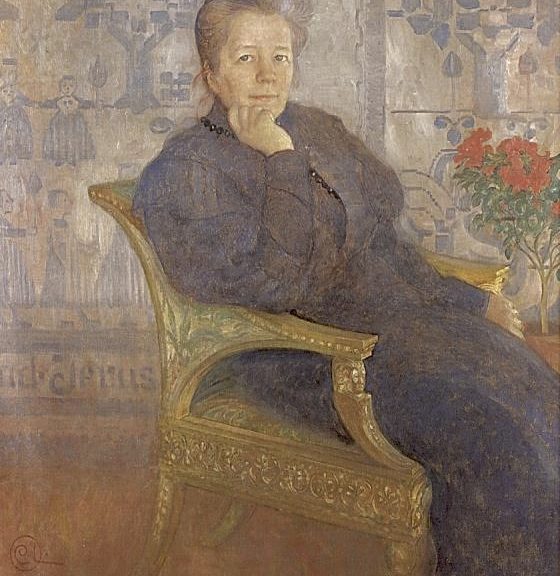The Swedish writer and Nobel Laureate in Literature SELMA LAGERLÖF died on this date (b. 1858). Born as Selma Ottilia Lovisa Lagerlöf in Östra Ämtervik (Värmland), Lagerlöf worked as a country schoolteacher in Landskrona for nearly ten years while honing her story-telling skills, with particular focus on the legends she had learned as a child.
Through her studies at the Royal Women’s Superior Training Academy in Stockholm, Lagerlöf reacted against the realism of contemporary Swedish-language writers such as August Strindberg. She began her first novel, Gösta Berling’s Saga, while working as a teacher in Landskrona. Her first break as a writer came when she submitted the first chapters to a literary contest, and won a publishing contract for the whole book.
In 1894 she met Sophie Elkan, also a writer, who became her friend and companion, and, judging from the letters between them that survive, with whom she fell deeply in love. Over many years, Elkan and Lagerlöf critiqued each other’s work. Lagerlöf wrote of Elkan’s strong influence on her work, often disagreeing sharply with the direction Lagerlöf wanted to take in her books. By 1895, she gave up her teaching to devote herself to her writing.
She and Elkan traveled to Italy where she wrote her novel, Antikrists mirakler, exploring the interplay between Christian and socialist moral systems. She moved in 1897 to Falun, and there met Valborg Olander, who became her literary assistant, friend, and associate. Elkan’s jealousy of Olander was a complication in the relationship. Olander, a teacher, was also active in the growing woman suffrage movement in Sweden.
In 1909 Selma Lagerlöf won the Nobel Prize “in appreciation of the lofty idealism, vivid imagination and spiritual perception that characterize her writings”. In 1914 she also became a member of the Swedish Academy, the body that awards the Nobel Prize. At the start of World War II, she sent her Nobel Prize medal and gold medal from the Swedish Academy to the government of Finland to help raise money to fight the Soviet Union. The Finnish government was so touched that it raised the necessary money by other means and returned her medal to her. Her portrait is on the Swedish 20 Kronen banknote.
